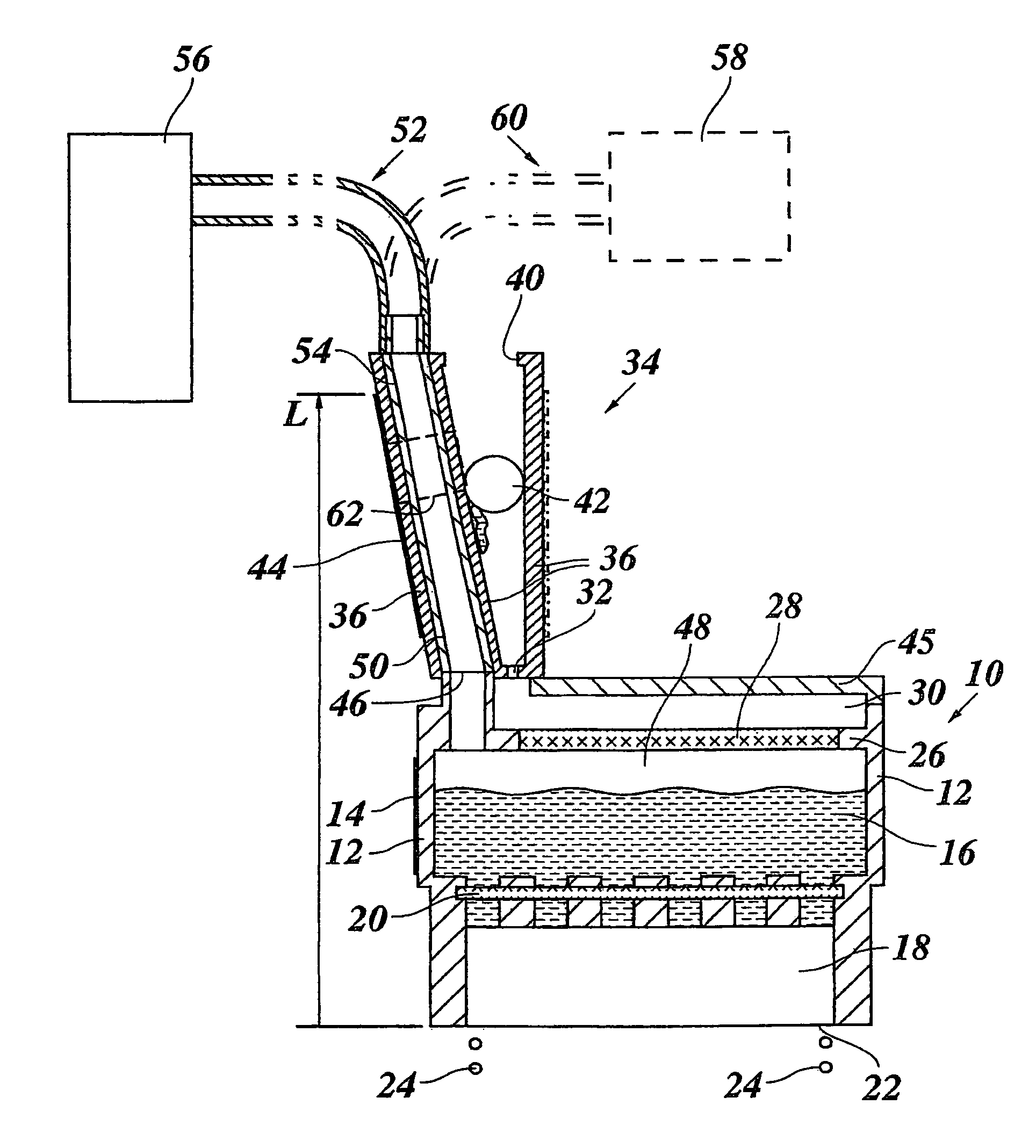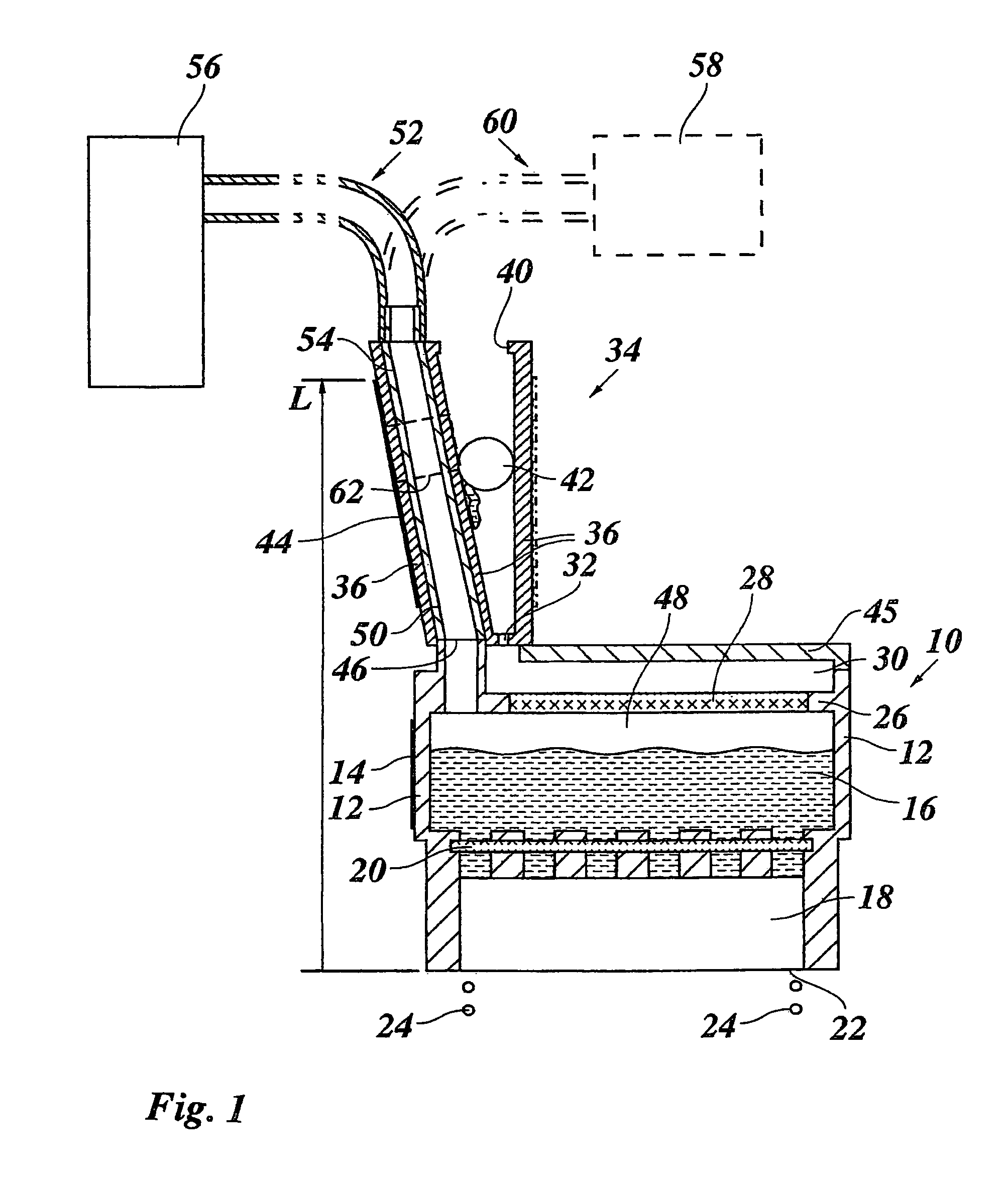Ink jet device with a ventilation conduit
a technology of ventilation conduit and ink jet, which is applied in the direction of measurement devices, printing, instruments, etc., can solve the problems that the conduit may also have a non-return valve, and achieve the effects of reliable ventilation, enhanced measuring accuracy, and greater freedom in the design of the print head
- Summary
- Abstract
- Description
- Claims
- Application Information
AI Technical Summary
Benefits of technology
Problems solved by technology
Method used
Image
Examples
Embodiment Construction
[0017]The ink jet device comprises an ink reservoir 10 having walls 12 made of thermally conductive material. As is generally known in the art, an electric heater 14 is in contact with or integrated in the walls 12 of the ink reservoir so that hot melt ink 16 contained in the ink reservoir is maintained at a temperature of, for example, 120° C. and in any case at a temperature above its melting point, so that the ink is kept in a liquid state and is ready to be supplied to an ink jet printhead 18 which is arranged below the ink reservoir and which is in fluid connection with the ink reservoir 10 via a filter 20. The ink jet printhead 18 comprises printing nozzles 22, as generally known in the art. Some ink jets 24 are indicated as examples. As is also generally known in the art, the ink reservoir 10 and the printhead 18 may be mounted on a reciprocating carriage of a printer, so that the ink reservoir 10 is moved back and forth in the direction of the line of sight of the figure whe...
PUM
 Login to View More
Login to View More Abstract
Description
Claims
Application Information
 Login to View More
Login to View More - R&D
- Intellectual Property
- Life Sciences
- Materials
- Tech Scout
- Unparalleled Data Quality
- Higher Quality Content
- 60% Fewer Hallucinations
Browse by: Latest US Patents, China's latest patents, Technical Efficacy Thesaurus, Application Domain, Technology Topic, Popular Technical Reports.
© 2025 PatSnap. All rights reserved.Legal|Privacy policy|Modern Slavery Act Transparency Statement|Sitemap|About US| Contact US: help@patsnap.com


